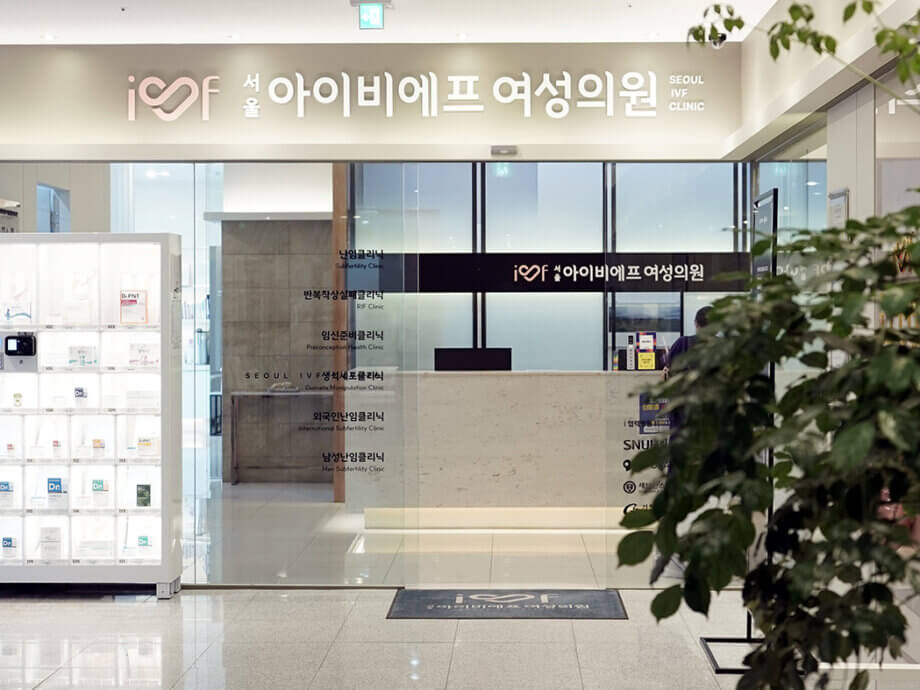South Korea’s Fertility Paradox: Booming Clinics, Shrinking Birth Rate
In the heart of Seoul, fertility clinics are bustling with hopeful couples and single women, many of whom are prepared to wait hours for a chance at parenthood. Kim Mi-ae, a 36-year-old resident, describes the scene as “crazy,” recalling a three-hour wait despite having a reservation. Her experience is emblematic of a new phenomenon in South Korea: while the country continues to hold the world’s lowest birth rate, demand for fertility treatments is surging. This paradox—booming fertility clinics amid a demographic crisis—raises urgent questions about the future of South Korea’s population and the effectiveness of government interventions.
- South Korea’s Fertility Paradox: Booming Clinics, Shrinking Birth Rate
- Why Are Fertility Clinics Booming?
- The Numbers: A Crisis with a Glimmer of Hope
- Barriers to Parenthood: Financial, Social, and Cultural
- Government Response: Incentives, Subsidies, and Policy Shifts
- Egg-Freezing: A New Option, But Not a Panacea
- Lessons from Abroad: What Works?
- Looking Ahead: Can South Korea Reverse the Trend?
- In Summary
Why Are Fertility Clinics Booming?
Between 2018 and 2022, the number of fertility treatments in South Korea rose by nearly 50%, reaching 200,000 procedures annually. In Seoul, one in six babies born last year was conceived with the help of fertility treatment. The industry is projected to be worth over $2 billion by 2030, reflecting both the scale of the challenge and the hope many place in medical science.
What’s driving this surge? Experts point to a profound shift in attitudes toward family planning. Sarah Harper, professor of Gerontology at the University of Oxford, observes,
“We have a young generation that is used to being in control of its life. That control may come in the form of single women freezing their eggs or couples trying IVF when they can’t conceive. Whereas in previous generations there was a greater acceptance that whether you conceive or not can be a bit haphazard, now we have Korean women saying, ‘I want to plan my life.’”
This generational change is visible in the growing popularity of egg-freezing and the willingness to pursue in vitro fertilization (IVF) despite the costs and challenges.
Changing Social Norms and Delayed Parenthood
South Korea’s younger generations are marrying later, prioritizing education, career, and financial stability before starting families. The average age for a woman’s first marriage is now 31.6, and the average age at first childbirth is 33.6—among the highest in the world. For many, the dream of parenthood is not abandoned but postponed, often until the biological window narrows and medical intervention becomes necessary.
Park Soo-in, a 35-year-old advertising professional, exemplifies this trend. She spent her twenties working long hours, unable to consider marriage or children. Only after securing a job with better hours and seeing friends start families did she and her husband pursue fertility treatment. “Seeing and interacting with their kids made it feel less overwhelming,” she says. “And watching my husband take initiative, doing research on pregnancy and childbirth and showing real effort, gave me confidence that we could do this.”
The Numbers: A Crisis with a Glimmer of Hope
South Korea’s birth rate has been in freefall for years. The total fertility rate—the average number of children a woman is expected to have in her lifetime—dropped from 0.98 in 2018 to 0.72 in 2023, far below the replacement rate of 2.1 needed to sustain the population. If this trend continues, experts warn that the country’s population of 50 million could halve within 60 years.
Yet, for the first time in nine years, there is a small but significant uptick: the birth rate rose slightly to 0.75 in 2024. In April, births jumped 8.7% year-on-year, the fastest monthly rise in 34 years. This “baby bump” is attributed to a sustained rise in marriages, a growing cohort of women in their early 30s, and shifting attitudes toward family and parenthood. Park Hyun-jung, director of population trends at Statistics Korea, notes,
“Increase in marriages, a larger population of women in their 30s, and a more positive perception of having children all appear to be contributing to the recent rebound.”
However, officials and experts remain cautious, unsure whether this marks the beginning of a long-term reversal or a temporary fluctuation.
Marriage and Childbirth: Still Closely Linked
Unlike many Western countries, childbirth outside of marriage remains rare in South Korea. The rise in marriages—now climbing for 13 consecutive months—serves as a leading indicator for future birth trends. The so-called “echo boomers,” a large cohort born in the early 1990s, are now entering their prime childbearing years, further fueling the recent uptick in births.
Despite these positive signs, the number of deaths continues to outpace births, and South Korea has joined Japan as a “super-aged” society, with more than 20% of the population over 65. The demographic challenge remains acute.
Barriers to Parenthood: Financial, Social, and Cultural
For many South Koreans, the desire to have children is strong, but the barriers are formidable. A United Nations report found that more than half of South Koreans want children but feel they cannot afford them. The high cost of living, expensive housing, intense educational competition, and long work hours all contribute to delayed or foregone parenthood.
Women, in particular, face a double burden. Traditional gender roles assign most childcare and household responsibilities to women, even as more pursue higher education and careers. The workplace is often unsupportive of working mothers, and taking parental leave can carry stigma or jeopardize career prospects. As one woman, Jang Sae-ryeon, put it after quitting her job to undergo IVF,
“It made me feel like IVF and a full-time job just don’t mix. So I quit. But once I left, I struggled financially. That led to another cycle of quitting and job-hunting again.”
The High Cost of Fertility Treatments
IVF and other fertility treatments are expensive and unpredictable. Even with government subsidies—up to 2 million won ($1,460) for egg-freezing and 1.1 million won per IVF cycle—out-of-pocket costs for supplements, additional tests, and multiple cycles can quickly add up. Success rates are less than 50% per cycle, meaning many couples must try several times. Jang Sae-ryeon, who has undergone five IVF cycles at a cost of 1.5 million won each, says,
“Without money, you simply can’t move forward. That’s the reality. And I think that’s the most frustrating part.”
Despite these challenges, the longing for family remains powerful. Jang, who suffered two miscarriages, still dreams of having a child. “I think having a child that resembles both of us and creating a family together is one of the greatest forms of happiness a person can feel,” she says.
Government Response: Incentives, Subsidies, and Policy Shifts
South Korea’s government has declared the low birth rate a “national emergency,” investing over $200 billion in pro-natal measures over the past two decades. These include cash incentives for newborns, subsidized housing for newlyweds, expanded parental leave, and support for fertility treatments. Local governments, like Jeju Island, have introduced creative policies such as offering public rental housing to newlyweds for less than $30 a month.
President Lee Jae Myung has made demographic recovery a cornerstone of his administration, proposing generous loans for newlyweds, expanded child allowances, and family-friendly tax reforms. The government is also launching a new ministry dedicated to population strategy, aiming to centralize and strengthen efforts to boost births.
Are Financial Incentives Enough?
Despite these efforts, experts question whether financial incentives alone can reverse the demographic decline. Hong Sok-chul, an economist at Seoul National University, argues,
“There needs to be effort to solve structural social problems.”
These include gender inequality, work-life balance, and the high cost of education and housing. Many women say that no amount of cash can compensate for a workplace or society that penalizes mothers or undervalues caregiving.
International comparisons suggest that countries with more gender-equal attitudes and flexible work arrangements—like France and Denmark—have higher fertility rates. In South Korea, however, women still account for 72% of those taking parental leave, and the “glass ceiling” remains formidable. The 4B feminist movement, which rejects traditional norms around dating, marriage, and childbearing, is gaining traction among young women, further complicating the government’s efforts.
Egg-Freezing: A New Option, But Not a Panacea
Egg-freezing is gaining popularity among South Korean women who want to keep their options open. The number of procedures has more than tripled since 2019, aided by government subsidies. For some, like Lee Chae-rin, freezing eggs provides peace of mind and the freedom to pursue personal passions before settling down. “Maybe it’s just because I really enjoy my life right now. But I think people naturally want to follow their passions—whether it’s studying, working more, or pursuing hobbies. For me, it’s surfing,” she says.
However, egg-freezing is not a universal solution. Most fertility clinics require a marriage certificate before initiating IVF, and sperm donation and surrogacy remain illegal. As a result, only heterosexual married couples can fully benefit from the technology. Critics argue that egg-freezing addresses the symptoms, not the root causes, of low fertility:
“The cause of the low birth rate is that young people are experiencing challenges including wealth inequality, sexism, long working hours, and insufficient child care support. But [egg-freezing] doesn’t tackle these underlying problems—it merely offers a medical solution to the problem,”
says Jeong Yeon-bo, a social sciences professor at Sungkonghoe University.
Lessons from Abroad: What Works?
South Korea is not alone in facing a demographic crunch. Japan, China, and many Western countries are also grappling with aging populations and declining birth rates. However, some nations have managed to avoid dramatic declines. France, for example, boasts the highest fertility rate in the European Union, thanks in part to generous parental leave, affordable childcare, and a culture that supports working mothers. Denmark’s flexible work culture and gender egalitarian attitudes have also helped maintain higher fertility rates.
Experts suggest that South Korea could benefit from policies that promote gender equality, improve work-life balance, and provide long-term support for families. Immigration is another potential solution, though it remains a politically sensitive topic.
Looking Ahead: Can South Korea Reverse the Trend?
The recent uptick in births and the boom in fertility clinics offer a glimmer of hope, but the underlying challenges remain daunting. The government’s willingness to experiment with new policies and invest in families is encouraging, but lasting change will require addressing deep-rooted social and economic barriers.
For many South Koreans, the decision to have children is not just a personal choice but a complex calculation involving finances, career, and societal expectations. As Kim Mi-ae reflects, “People spend their youth studying, job hunting, and spending money to prepare for life. And by the time they’re ready to settle down, it’s often late. But the later you wait, the harder it gets [to become pregnant], physically and emotionally.”
In Summary
- South Korea has the world’s lowest birth rate, but demand for fertility treatments is surging, with one in six babies in Seoul now born via fertility assistance.
- Changing social norms, delayed marriage, and financial pressures are driving both the fertility clinic boom and the demographic crisis.
- Government incentives and subsidies have had limited impact; experts say deeper structural reforms are needed, including gender equality and work-life balance.
- Egg-freezing and IVF offer hope to some, but are not universal solutions and do not address root causes.
- Recent increases in births and marriages provide cautious optimism, but the long-term trend remains uncertain.
- South Korea’s experience offers lessons for other countries facing similar demographic challenges: policy, culture, and economics must all be addressed to support families and reverse population decline.




